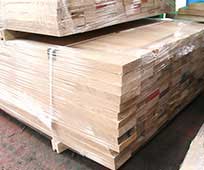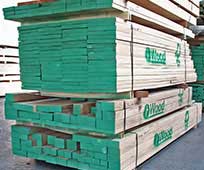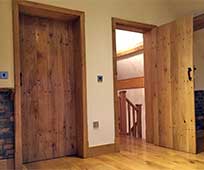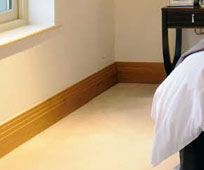Articles: What is Sapele wood?
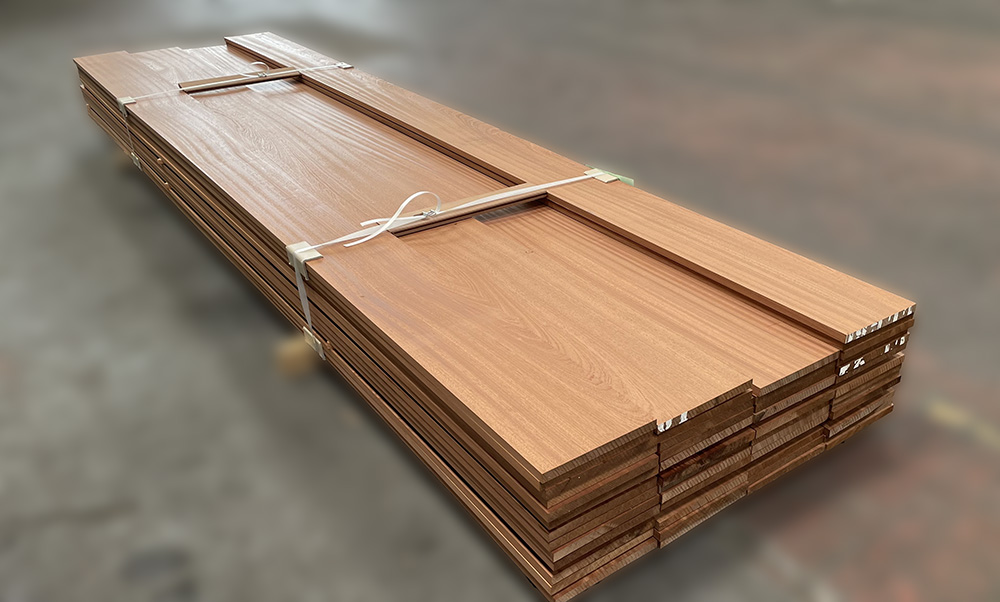
Sapele is a tropical hardwood well known for its stability, durability and strength. It is particularly stable and has high resilience to rot and pests making it ideal for external use.
Where does sapele wood come from?
Sapele is one of the more commercially available tropical hardwoods and originates from West Africa with large populations native to Ivory Coast, Ghana, Nigeria, Cameroon, and Uganda. The Sapele tree (Entandrophragma cylindricum), thrives in these regions reaching up to impressive heights of 45 meters (around 148 feet) and can have trunks over a meter in diameter, which allows them to yield a substantial amount of usable timber. The abundance of the Sapele tree across central and western Africa make it a more affordable and available despite it being considered a high-quality alternative to other tropical hardwoods like Mahogany.
What is sapele wood used for?
Thanks to its similar aesthetic and exceptional properties, Sapele is often used as a more affordable substitute to mahogany. Here are some of its primary uses:- Furniture Making: Sapele’s attractive appearance and hardness make it popular for crafting indoor and outdoor furniture. Its natural resistance to rot and insect damage contributes to its durability in these applications.
- Flooring: Sapele is a favourite for hardwood flooring due to its density and strength, providing a durable surface with a warm, luxurious appearance. Its interlocking grain pattern also gives it a unique shimmer and depth, adding elegance to flooring.
- Cabinetry and Joinery: The wood’s workability and stability make it excellent for cabinetry, panelling, and other fine joinery. Its colour and natural lustre provide a high-end look that enhances home interiors.
- Panelling and cladding: Due to its striking grain and colouration, Sapele is commonly used for boarding in decorative applications, including wall cladding and furniture accents.
- Boatbuilding and Exterior Applications: Sapele’s natural durability and resistance to water make it a solid choice for marine applications, such as decking, boat trim, and other exterior projects, where strength and resistance to weather are essential.
Is Sapele wood expensive?
Tropical timbers due to their slow growth and high quality tend to be more expensive than temperate hardwoods. However, due to its availability, Sapele is typically one of the most economically priced tropical timbers. Infact, you can also find Sapele more cost effective than some temperate hardwoods such as KD Oak and KD American maple.
This lower price point and excellent properties are why Sapele is very popular for a variety of projects and a go to substitute for Mahogany.
How to finish Sapele wood
Sapele is a naturally resistant to rot, pests and moisture movement so can be left untreated when used externally. However, without treatment, the wood will silver overtime. A quality finish will prevent this and further bolster the timber and enhance durability. Here’s how to finish your sapele:
- Sanding
- Begin by sanding the wood to smooth out any rough spots and open up the grain for even absorption.
- Start with medium-grit sandpaper (around 120 grit) and gradually move to a fine grit (220 grit) to achieve a smooth surface.
- Make sure to sand with the grain to prevent scratches.
- Filling in the grain (optional)
- Sapele has a prominent grain that can be porous, so filling the grain is recommended for a smooth, glassy finish, especially on furniture or cabinetry.
- Apply a grain filler that matches the wood colour and work it into the grain with a cloth or scraper. After drying, lightly sand the surface to ensure smoothness.
- Select your Finish
- Oil Finish: Applying oil (like Danish oil or tung oil) enriches Sapele’s colour and highlights its beautiful grain. Oils penetrate the wood, adding protection without creating a thick surface layer.
- Polyurethane or Varnish: For a durable, high-gloss finish, use a clear polyurethane or varnish. This is especially suitable for high-traffic or moisture-exposed areas like flooring, decking or tabletops.
- Lacquer: For a quicker, satin-smooth finish, lacquer can be used, although these are less durable in moist environments.
- Aftercare maintenance
- Regularly dust the finished Sapele wood with a soft cloth and avoid harsh cleaners that can strip the finish.
- For outdoor pieces, periodic maintenance with oil or outdoor-grade finish is recommended to keep the wood protected from weathering.
These steps can help you achieve a smooth, durable, and beautiful finish on Sapele wood that enhances its natural character and grain.
Where can I buy Sapele?
Right here! iWood offers a variety of Sapele products – follow the links below or use our contact details to get in touch for a quote.
- Tel: 01889 597281
- Email: enquiries@iwood.co.uk







 Main Menu
Main Menu


